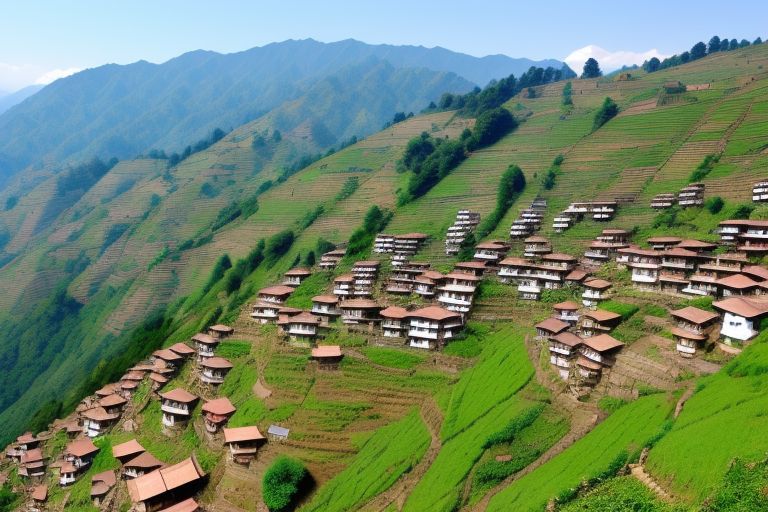Nagarkot rising just 32 kilometres east of Kathmandu is now a less crowded hill station which is gradually changing its tourism management strategies towards sustainable tourism and travellers’ involvement. This new development is slowly revolutionising the experience of the tourists in this highly travelled range that features the Himalayas, including Mount Everest.
Emerging policies by local tourism organisations and manufacturers are directed towards sustainable tourism, the practise of which has the least harm to the environment to bring maximum advantages for the local population. Such approach corresponds to the global tendencies of eco-tourism and meets the demands of more and more tourists, who pays attention to the environmental problems.
It should be noted that one of the focuses of this new direction is the environmental friendliness of the accommodations offered. Most of the hotels and resorts in Nagarkot have gone green to incorporate solar power, minimize plastic bags, and save water. Such efforts not only pass on the message to those travelers who are concerned about the environment but also protect nature, which is the primary motivation for travel to Nagarkot.
CBT is one that has started receiving attention in the recent past, especially in the last few months. The local actions have now empowered local people to participate in the offer side of the tourism industry by hosting tourists, availing their property for homestay, or even offering cultural and historical site tours of the region. This approach makes a dead ensures that the revenue generated from tourism is channeled back to the local people and also gives tourists a more fulfilling experience.
In the following sectors, there are measures being taken towards sustainable tourism in Nagarkot: Responsible treks, hikes and Nature tourism. Currently, official escorts and all persons who conduct visitors through the area are imparted knowledge about the conservation of the sophisticated mountain environment. Trekking routes are being managed and sign-posted progressively to reduce hazards to tourists and any disturbance to the natural environment.
Tourism in Nagarkot is also diversifying to meet the needs of the changing customer base due to factors such as the outbreak of Covid 19. Many travelers are shifting away from large group traveling and are opting for smaller group travels to create more buffer between them and other travelers and to get a more real experience and understanding of the place they are visiting.
The considerable biological diversity of the area is being used as an advantage. Excursions, such as bird watching and nature hiking, are becoming more popular, offering specialized nature tourism with a limited use of ecotourists who are curious about the flora and fauna of the region. This focus on nature-based tourism expands the variety of the tourists’ experience and promotes various conservation measures.
For this model of sustainable tourism, the local authorities are straining hard to develop associated infrastructure. Ideas on how to improve on the public transport systems so as to discourage the use of private means of transport with their negative impact to the environment are also in the pipeline. Furthermore, waste management standards are shifting to accommodate the numbers of tourists through the sustainable initiative.
The tourism sector in the area is also adopting the use of technology in a bid to improve the visitors’ experience while at the same time practising sustainability. Information systems are being deployed in different viewpoints and historic sites whereby more often than not, the use of printed media is done away with and visitors gain extensive information about the importance of the area naturally and historically.
Information and education of tourists as well as residents of the destination is being conducted to increase understanding of sustainable tourism practises. These initiatives are intended to foster an understanding by the tourist fraternity, volunteering groups and volunteers, conservation organizations, and other interested parties toward sharing the responsibility for the protection of Nagarkot’s biophysical and cultural heritage.
However, the change currently being experienced from sustainable tourism in Nagarkot has some challenges briefly described below. The issues, such as, optimising between development and conservation, handlingmore visitor arrivals, and distributing tourism benefits fairly among the locals, are being solved at the moment.
As Nagarkot is still developing as the new Tourism Hub for Nepal, this focus on Sustainability and Community Empowerment should act as a trend for copy by other tourism destinations in Nepal and the world. Through this approach the sustainability of tourism in the region is guaranteed while the quality of visitation and the tourist experience is improved through presenting tourists with greater and responsible opportunities for enjoying the beauty of the Himalayas.
As such, the next couple of months or years will be formative in the success or otherwise of these sustainable tourism endeavors in Nagarkot. However, as more tourists look for sustainably and responsibly administered tourist destinations, Nagarkot’s strategies of accommodation and encouragement of tourism growth with sustainable respect for the environment and the communities will make this destination exemplary in the future post-COVID-19 era.


